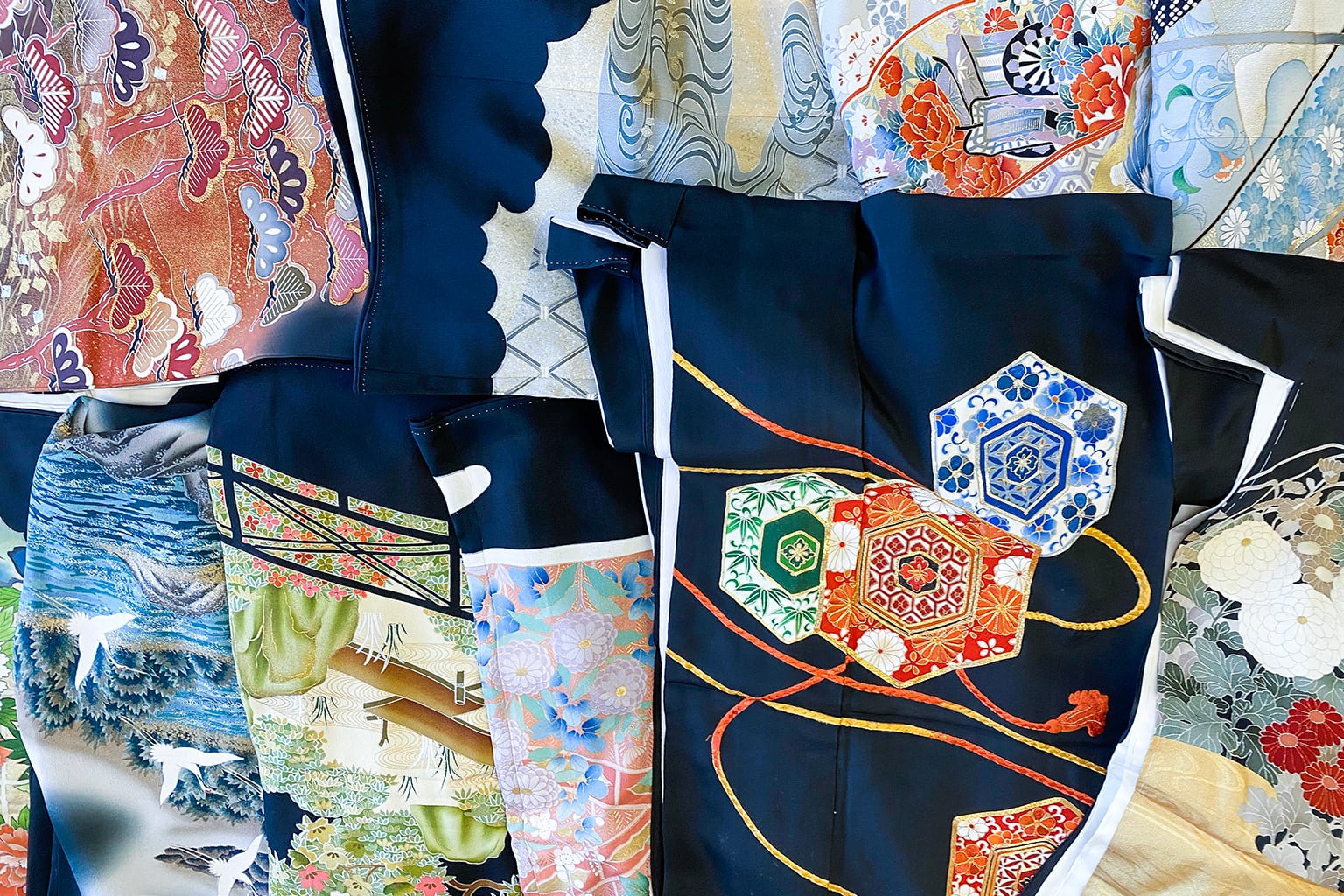サステナブル sustainable 可持續的
通常ならば廃棄されてしまう着物の古着やB反、あるいはTシャツなどを活用して、アイデアあふれるオリジナル商品を開発しています。
We develop original products full of ideas by using old kimonos, B-cloths, T-shirts, etc. that would normally be thrown away.
我們利用通常會被丟棄的舊和服、B 布、T 恤等,開發充滿創意的原創產品。
代表的な商品 Representative products 代表產品
以下のような素材を活用しています。We utilize the following materials: 我們使用以下材料:
古い着物 old kimono 舊和服

着物生地のB反(B反は製造上わずかなキズが入ってしまった生地ですが、全く目立たず実用上は影響ありません。)
Kimono fabric B fabric (B fabric has slight scratches due to manufacturing, but it is not noticeable at all and does not affect practical use.)
和服布料B布料(B布料因製造有輕微刮痕,但完全不明顯,不影響實際使用。)
一般的な古着 general old clothes 一般舊衣服
古着問屋から大量に仕入れ、使える素材を厳選して活用しています。
We purchase large quantities from second-hand clothing wholesalers and carefully select the materials that can be used.
我們從二手服裝批發商處大量採購,並精心挑選可以使用的材料。
生産方法 production method 製作方法
■水を使わない消臭加工
Deodorizing process that does not use water
不用水的除臭過程

一般に古着の消臭処理は全く施されないか、あるいは水洗いによって実施されています。我々はサステナビリティのために、水を使用せずに効率よく消臭する方法を徹底的に研究しました。
Generally, old clothes are not deodorized at all, or they are washed with water. For sustainability, we have thoroughly researched ways to efficiently deodorize without using water.
一般舊衣服根本不除臭,或用水洗。為了永續發展,我們深入研究了無需用水即可有效除臭的方法。

産業技術研究所で電子顕微鏡などを用いて臭いの元を徹底的に研究し、皮脂が大きい要因であることを突き止めました。
The National Institute of Advanced Industrial Science and Technology thoroughly researched the source of the odor using electron microscopes and discovered that sebum was a major factor.
產業技術綜合研究所利用電子顯微鏡徹底研究了異味的來源,發現皮脂是主要因素。
-
電子顕微鏡による観察
Observation using an electron microscope
使用電子顯微鏡觀察 -
ニオイのもとを分析
Analyzing the source of odor
分析氣味來源
突き止めた原因を元に、国立大学との共同研究で、様々な消臭方法(酸、クエン酸、重曹、オゾン、ウルトラファインバブル、など)を試して、水を使わないベストな消臭方法を見出しました。
Based on the identified cause, we conducted joint research with a national university and tried various deodorizing methods (acid, citric acid, baking soda, ozone, ultra-fine bubbles, etc.) to find the best method that does not use water. I found a way to deodorize it.
根據查明的原因,我們與國立大學進行了聯合研究,嘗試了各種除臭方法(酸、檸檬酸、小蘇打、臭氧、超細氣泡等),找到了不使用水的最佳方法。我找到了除臭的方法。


